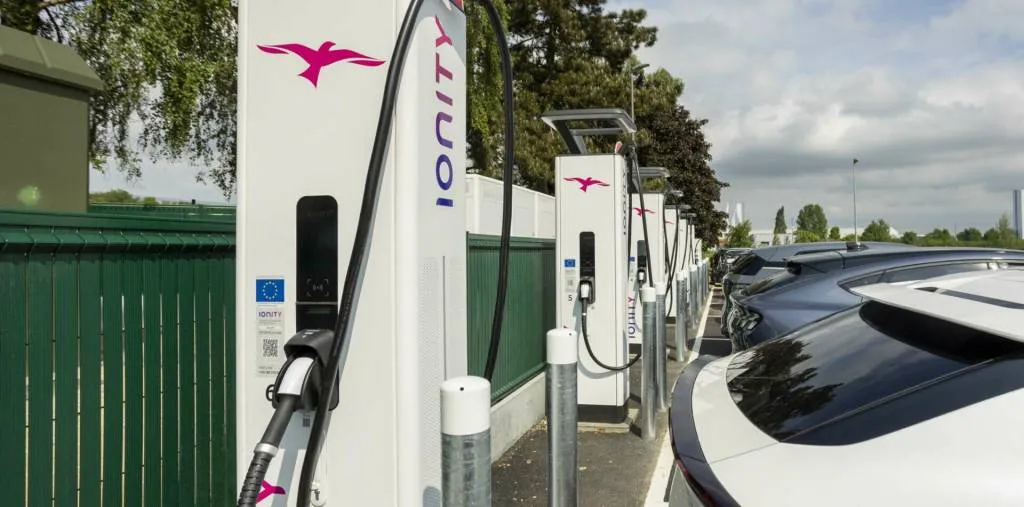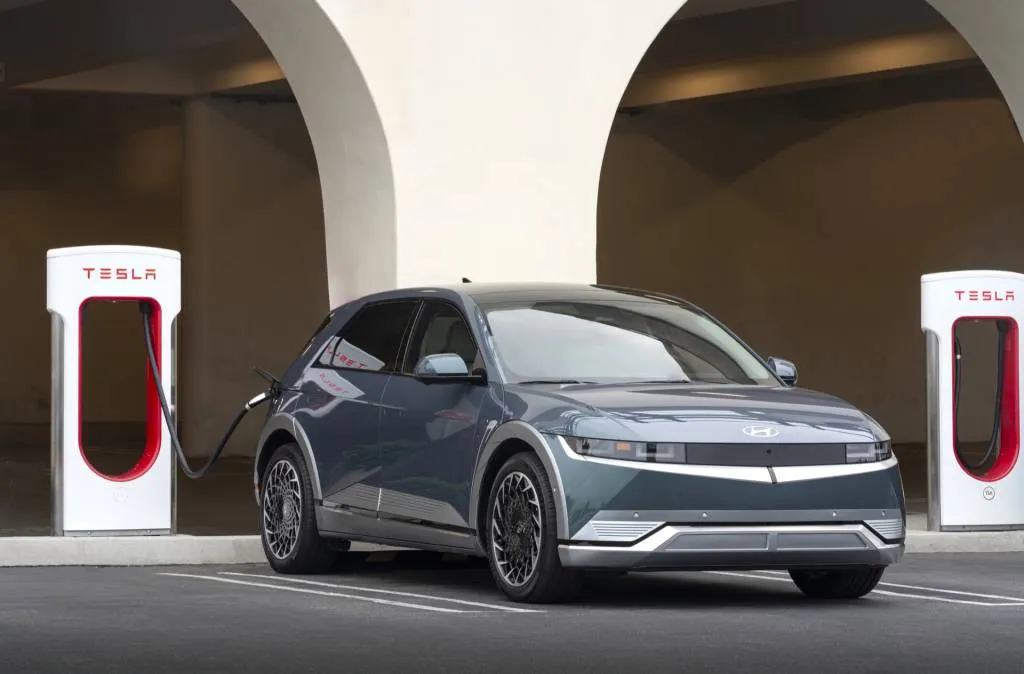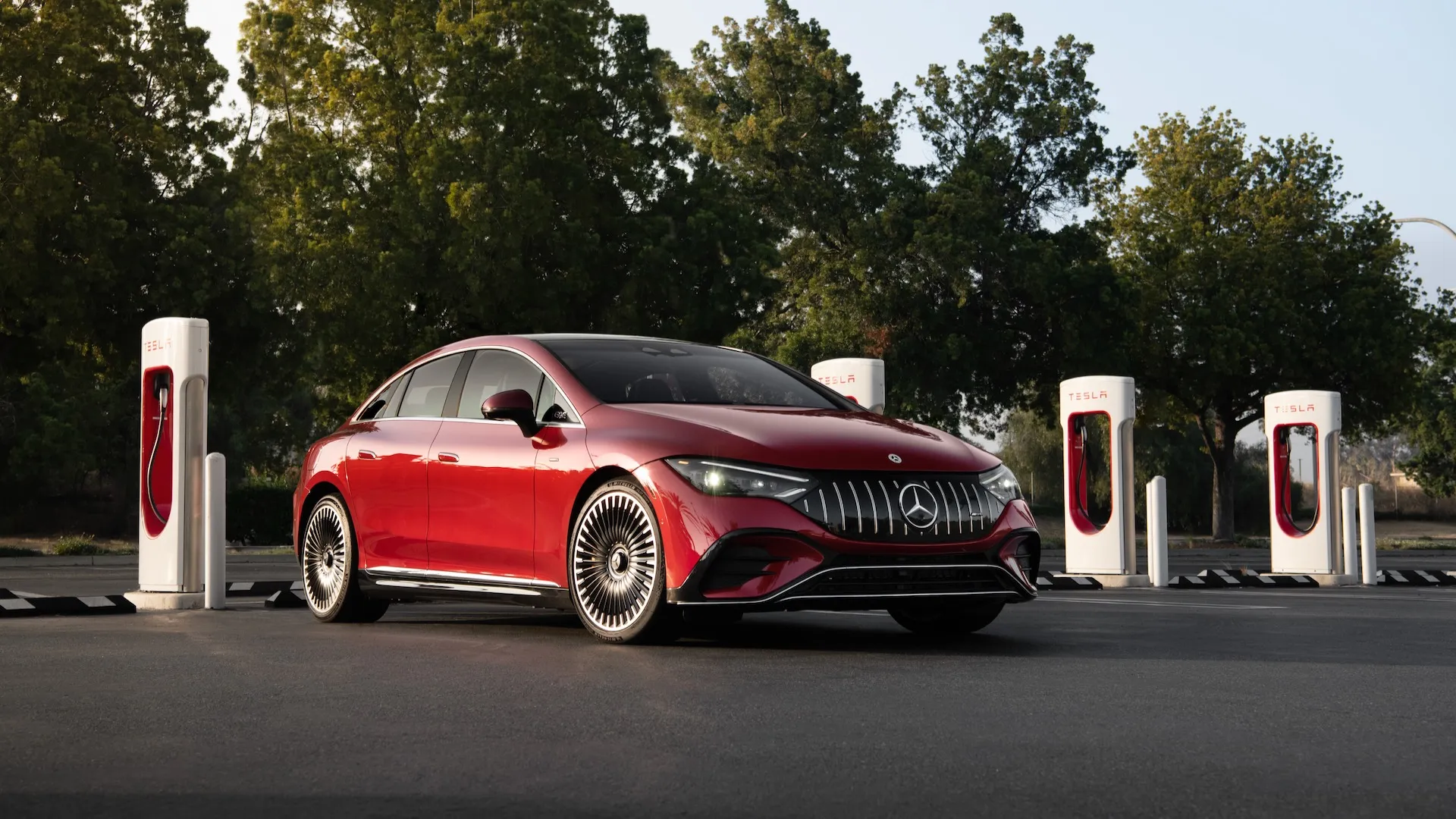Tesla’s recent pullback of Supercharger operations doesn’t appear to have affected the plans of Ionna, the charging network for the U.S. and Canada directly funded by seven automakers.
The charging network on Tuesday re-upped its commitment to build a network of more than 30,000 high-power urban and highway-adjacent fast-charging connectors, and it hints that work is already well underway on the first of those as it anticipates its first U.S. charging stations will open in 2024.
First announced in July 2023, with backing from BMW Group, General Motors, Honda, Hyundai, Kia, Mercedes-Benz, and Stellantis, Ionna officially started operations (and got its name) in February. It’s now begun to emerge from a stealth period.
North America, depicted in Ionna EV charging network announcement
With today’s announcement, the charging network established headquarters in Durham, North Carolina, and it confirmed some core executives: Derek Rush as CFO, formerly the CFO of BP Pulse, Ricardo Stamatti as chief product officer, formerly a top Stellantis Energy executive, and Shankar Muthukumar as COO, formerly of the construction and development firm Mortenson. CEO Seth Cutler was announced in February.
Ionna noted in its original formation that it would have “a focus on delivering an elevated customer experience,” so expect a high level of attention paid to the interface, uptime, and reliability in general—as well as the amenities at charging stops. It’s fair to say that remote corners of big-box retailer parking lots will no longer suffice.
The network has also already confirmed that it will be powered by renewable energy, with the capability for reservations and intelligent route planning, plus full support for Plug & Charge technology from the start, meaning fewer needs for credit-card swipes and app handshakes. It has also confirmed that 350-kw connectors would be a starting point for its experience, although it confirmed that it intends to have “the best charging power available on the market and technological state-of-the-art charging at all times.”

Ionity charging in France
For North America, this may be the closest equivalent to the Ionity fast-charging network that Ford, VW, and Audi launched for Europe in 2017. That network arguably helped accelerate the European EV market past America at a time when it was tracking behind it. Electrify America, which was created as part of the company’s diesel-scandal penalty, has been entirely a VW operation, with the exception of a Siemens investment; but it does plan to grow by 25% in 2024.
Some Ionna locations may potentially be vying for federal NEVI funding alongside other networks—or, perhaps, competing with the Tesla Supercharger network, depending on whether Tesla reactivates its Supercharger buildout.
Much has happened to the business around charging since Ionna was originally announced, EV charging reliability has become a hot topic, and the industry has committed to a shift to the Tesla-based NACS connector in future EVs—meaning that a wide range of brands will soon be able to charge at Tesla’s Supercharger network, providing Tesla with an additional revenue stream. Meanwhile, Tesla last month eliminated most of its Supercharger team, throwing the future growth of the network into disarray.

Hyundai at Tesla Supercharger
Ionna officials haven’t yet revealed details as to whether its own charging hardware will employ connectors or adapters, but it confirmed to Green Car Reports that the network will offer hardware that’s ready to charge EVs with either charge port.
“We’re committed to both,” confirmed chief product officer Stamatti to Green Car Reports, noting that even as NACS arrives, many EVs with CCS ports will continue to be built—in addition to all the ones already in use. “It’s open to all and we’ll do both form factors.”
Read the full article here




